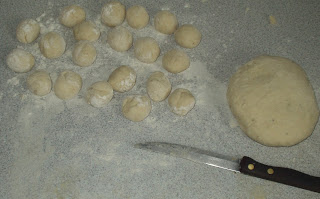Since the Maguey* (Agave americana, also known as the Century plant, although it's life span is more along the lines of 25 years. The immature flowering stem is harvested to make pulque, an alcoholic beverage) isn't a common plant here in the north of England, and it takes around 11 years for each leaf to grow (being 2 meters long & covered in spines probably makes it quite a faff to harvest too), baking parchment works well as a substitute.
Living under the yoke of Yorkshires Clean Air law, a big fire pit in the garden is probably not going to happen either, so we'll be steaming the mixiote.
Also, me being a vegetarian, this recipe will be made with Quorn.
Quorn is one of the greatest things to happen to the lacto-ovo vegetarian (or Vegetarians who eat dairy products and eggs, as we're otherwise known), it's a mycoprotein food (a fancy term meaning it's a mould grown in fermentation tanks - tasty!) high in vegetable protein & dietary fibre, while also being low in saturated fat & salt. It's also delicious. And versatile. Yay, Quorn!
Okay, enough flag waving. This recipe also works with tofu or seitan too. Or if you're in the mood for some veg, butternut squash should work well instead.
Quorn Mixiotes
1 350g pack of quorn pieces (you could use the same amount of firm tofu, mild flavoured gluten. Heh, you could even use chicken or mutton, cut into 1" cubes)
1 Ancho chile
1 Guajillo chile
1 Pasilla chile
1/2 onion, chopped
50g ground almonds
1 sun dried tomato (or 1 fresh tomato, or 1tbs tomato puree)
2 cloves garlic, crushed
200ml Vegetable stock (although orange juice also works well)
1 tbs oil
1/4 tsp each of thyme, cumin & oregano
Salt & pepper
4 Bay leaves
4 cloves
Deseed & toast the chiles in a dry frying pan. Place in a bowl & cover with boiling water & leave to soak until soft. Drain & put into a blender or food processor with the tomato, garlic, vegetable stock & onion & blend until smooth (add a little more water if necessary). Heat oil in a saucepan until quite hot, but not smoking. Add the chile mixture & stir. It will hiss madly at you, but fear not, this will thicken up & enrich the sauce, and make it even more delicious. Reduce the heat & add the ground almonds, cumin, oregano & thyme. Leave to simmer on a low heat for around 10 minutes. Add salt & pepper to taste & put to one side.
Combine the quorn/tofu/whatever with the chile mixture. If you're using tofu or meat, leave to marinade for at least 1 hour. If the mixture is a little dry, add a little water or stock.
Cut 4 24cm squares of baking parchment or greaseproof paper & divide the mixture equally between them. Add a bay leaf & a clove to each pile & tie up into parcels (I'm using red string from brewery malt sacks, though those of you not married to brewers can use butchers string, garden twine or anything along those lines). Arrange in a steamer & steam until cooked through (for quorn or tofu this will be around 45 minutes to 1 hour). Serve the parcels with warm corn tortillas & sliced avocado.
*In Aztec mythology, the Maguey was created by Quetzalcoatl**, the Feathered Serpent, out of the bones of Mayahuel after she was devoured by star demons. And no, I'm not making it up.

 Turn the dough out onto a well floured surface & cut into roughly walnut-sized pieces. Roll the pieces into rounds (don't worry if they're different sizes) & toss in flour, as they will get sticky when left to their own devices (traditionally gnocchi are shaped by fork & a thumb into a ridged curl shape. It's a fiddly process & I suck at it). If you have more gnocchi than you can eat, it freezes well at this point. Just make sure each dumpling is well floured & put into
Turn the dough out onto a well floured surface & cut into roughly walnut-sized pieces. Roll the pieces into rounds (don't worry if they're different sizes) & toss in flour, as they will get sticky when left to their own devices (traditionally gnocchi are shaped by fork & a thumb into a ridged curl shape. It's a fiddly process & I suck at it). If you have more gnocchi than you can eat, it freezes well at this point. Just make sure each dumpling is well floured & put into 


